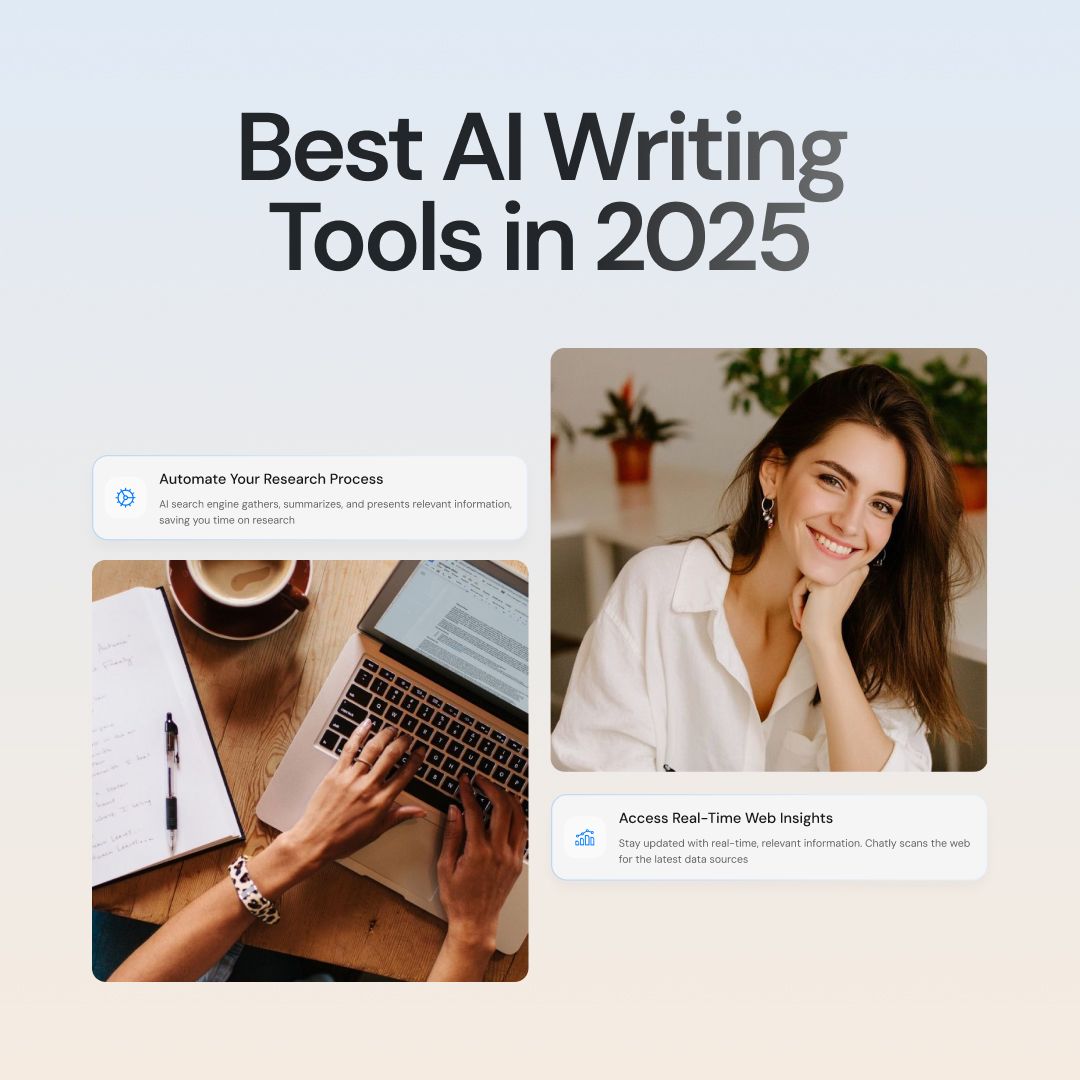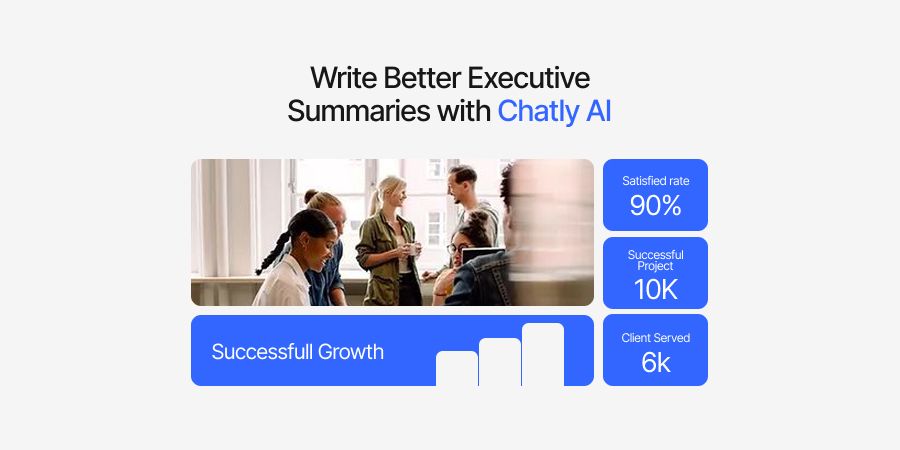
How to Write an Executive Summary (Examples, Samples & Templates)
An executive summary is often the first page anyone reads in a business plan, report, or proposal.
Why?
Because it sets the stage, highlights the most critical points, and helps busy decision-makers understand why the document matters.
Think of it as the elevator pitch of your report. If written well, an executive summary can win attention, create clarity, and open the door to further discussion.
What makes it so important? Executives, investors, and stakeholders rarely have time to read every page of a detailed document. Instead, they want a concise yet powerful overview that tells them what the problem is, what the solution looks like, and why it’s worth their attention. That is where an executive summary comes in.
What Is an Executive Summary?
At its simplest, an executive summary is a short overview with key details of a longer document. It distills the essential details including the problem being solved, the goals being pursued, the solution being proposed, and the key financial or strategic takeaways.
If someone were to read only this section, they should still walk away with a clear understanding of the document’s purpose and value.
The content of an executive summary shifts depending on its purpose. In a business plan, it often highlights the size of the market, the company’s competitive strengths, and projected financial performance. In a project report, it usually outlines objectives, key milestones, timelines, and the results stakeholders should anticipate.
The length usually ranges from one to two pages, but the quality matters far more than word count. A strong summary is always concise, clear, and tailored to the audience.
Why Executive Summaries Matter the Most
Most people don’t have the time or patience to read a 40-page plan or a detailed research report. They want the gist, and they want it fast. That’s the role of the executive summary.
Think about an investor opening a startup plan.
They’ll skim the first page, looking for signs of market potential, a solid strategy, and financial upside. If those appear in plain, confident writing, the plan gets a fair chance. If not, it’s already at risk.
The same applies to project proposals, corporate strategies, and academic studies. A good summary persuades and it frames the problem, highlights the solution, and gives enough value to earn the reader’s attention.
This blend of clarity and brevity is valuable far beyond executive summaries. You see it in meeting minutes, case reports, even cover letters. The best writing gives the reader exactly what they need, nothing more.
Core Components of an Executive Summary
1. Company or Project Overview
A short introduction sets the stage. In the case of a business plan, this could be as simple as describing who you are, what you do, and where you operate.
2. The Problem
Every good summary acknowledges the challenge first. Define the gap in the market, the customer frustration, or the inefficiency you intend to solve. Without this, the rest lacks context.
3. Objectives
List the outcomes you’re aiming for. Clear objectives tie the summary to measurable results and show that the work is not just aspirational.
4. The Proposed Solution
This is where you present your answer to the problem. It should be direct and persuasive, leaving little doubt about why this approach is worth pursuing.
5. Financial Highlights and Metrics
Numbers speak louder than adjectives. Whether it’s projected revenue, expected savings, or key performance indicators, a few figures can quickly prove the weight of your plan.
6. Recommendations and Next Steps
Conclude with direction. A summary should always end with clarity about what you want from the reader. It may be some sort of approval, funding, or alignment.
When these parts are woven together, the result is more than an introduction. With all this detail, it becomes a tool designed to give stakeholders the confidence to say yes and the motivation to keep reading.
How to Write an Executive Summary Step by Step
The easiest way to approach an executive summary is to think in stages. Instead of trying to condense an entire document all at once, break the process into smaller moves that build toward a clear, persuasive whole.
Step 1: Understand the Audience
The same summary won’t work for every reader. Investors will expect numbers, market validation, and financial projections. Senior managers might focus on risks and resources.
A nonprofit board could want clarity on community impact. Knowing exactly who you’re writing for ensures the summary delivers what matters most to them.
Step 2: Start With the Problem
Every meaningful plan begins with a challenge worth solving. Open with the problem in simple, concrete terms – the market gap, inefficiency, or pressing need that justifies the rest of the work. A summary without a problem is just a list of ideas without context.
Step 3: Outline the Solution
Once the problem is clear, describe how you intend to fix it. Keep the language confident but not overloaded with detail. The goal is to spark interest, not drown the reader in specifics that belong deeper in the report. Think of this as the pitch for your proposed direction.
Step 4: Demonstrate Value
Numbers, outcomes, and tangible benefits make an argument stronger. Revenue potential, expected savings, or performance improvements should appear here. Even in a short summary, a line or two of measurable value can create the credibility that readers look for before making decisions.
Step 5: Keep It Concise and Focused
An executive summary that tries to say everything ends up saying nothing. Aim for a single page if possible, two at most. The tighter the structure, the easier it is for stakeholders to process what you’re asking them to consider.
Step 6: Refine and Seek Feedback
First drafts are rarely the strongest. Reread with a critical eye, trim excess words, and test the draft with colleagues who weren’t involved in writing the main document. If they can understand the key points quickly, you’re on the right track.
Writing in this structured way sharpens overall communication. The same principles of audience awareness, clarity, and conciseness apply whether you’re writing a quick literature review, or preparing a press communique. Each format demands a clear opening, a persuasive middle, and a confident close.
Examples of Executive Summaries
Understanding structure is one thing and seeing real examples makes the concept far more practical.
Below are three sample executive summaries for different contexts: a business plan, a project proposal, and a research study. Each follows the same core framework – introduce the context, define the problem, outline the solution, demonstrate value, and suggest next steps.
Executive Summary Example for a Business Plan
Overview
FreshPath is a subscription-based meal delivery service created for urban professionals who need affordable, nutritious meals.
Problem
In large cities, more than half of professionals rely on fast food several times a week. Lack of time and high cost are the leading barriers to healthier eating.
Solution
Value
The business projects 5,000 subscribers in its first year, generating $2.5 million in revenue, with healthy margins maintained through supplier contracts and scalable operations.
Next Steps
The company is seeking $750,000 in seed funding to expand kitchen space, build logistics capacity, and launch regional marketing campaigns.
This business plan summary highlights numbers, opportunity, and validation – the essentials for securing investor interest.
Executive Summary Example for a Project Proposal
Overview
GlobalMart is planning a six-month initiative to modernize its outdated inventory management system.
Problem
The current process causes stockouts worth $20 million annually, while overstocking leads to high warehouse costs and wasted resources.
Solution
By introducing AI-driven forecasting, GlobalMart will improve demand accuracy by 40 percent, reduce waste, and ensure better product availability.
Value
The company expects savings of $12 million each year, faster restock times, and improved customer satisfaction scores.
Next Steps
Approval is requested for a phased rollout, beginning with pilot testing in two high-volume regions.
This project-focused summary is designed to win quick alignment and show the direct value of funding the initiative.
Executive Summary Example for a Research Study
Overview
This study examines the impact of urban green spaces on mental health across three metropolitan areas.
Problem
Rising levels of anxiety and depression in urban populations suggest that limited access to natural environments may be a contributing factor.
Solution
Survey data from 15,000 participants was combined with geographic mapping of parks, gardens, and public green corridors.
Value
Findings show a 22 percent reduction in reported stress levels among individuals with daily access to green spaces. These results support policy changes prioritizing green infrastructure.
Next Steps
We recommend introducing minimum green space requirements into new urban development policies.
This type of summary shifts focus from profit to evidence and policy influence, showing how the format adapts to different objectives.
Executive Summary Templates and Samples
A template makes the process easier if you are just getting started. You can follow a structure that ensures every important point is covered. Below is a fill-in-the-blank template, followed by a polished sample version that demonstrates how to use it effectively.
Executive Summary Template for Any Document
Overview
[Briefly introduce your company, project, or study. Include what the document is about in one or two sentences.]
Problem
[State the challenge or gap this document addresses. Keep it specific and relevant to the audience.]
Solution
[Describe your proposed solution or strategy. Keep it high level and persuasive, without too much detail.]
Value
[Summarize the benefits, financial projections, or impact of your solution. Use measurable outcomes where possible.]
Next Steps
[Explain what you want the reader to do next – approve, invest, support, or take another action.]
Executive Summary Sample for a Marketing Campaign
Overview
GlowSkin, a skincare brand, is preparing to launch a nationwide digital marketing campaign aimed at increasing brand awareness and boosting online sales.
Problem
Despite strong customer reviews, GlowSkin struggles with limited visibility in a crowded beauty market. Competitors dominate search rankings and social platforms, leaving GlowSkin underexposed to its target audience.
Solution
The campaign will use influencer partnerships, targeted social media ads, and SEO-driven content marketing. Each channel is chosen to reach millennial and Gen Z audiences actively engaging with skincare content online.
Value
Next Steps
Approval is requested for a $600,000 campaign budget to secure influencer contracts, produce creative assets, and execute a three-month rollout across Instagram, TikTok, and YouTube.
Executive Summary Sample for a Nonprofit Funding Request
Overview
BrightFuture is a nonprofit dedicated to improving digital literacy among underserved youth in rural communities.
Problem
Nearly 40% of students in these areas lack access to the training and resources needed to compete in a technology-driven job market.
Solution
BrightFuture will launch a network of mobile learning labs equipped with laptops, internet access, and trained instructors to deliver digital literacy programs directly to schools.
Value
The program expects to reach 12,000 students in its first year, increasing graduation rates by 15% and improving career readiness. Early pilot programs have shown measurable improvements in student outcomes.
Next Steps
BrightFuture seeks $250,000 in grant funding to scale its mobile labs, expand into three new districts, and partner with local businesses for internship opportunities.
Templates like these make writing easier, but the real skill is in adapting them to the context. Just as when writing a news release or a brand collaboration proposal, the structure provides consistency while the content makes it unique.
Benefits of an Executive Summary
A well-written executive summary saves time, accelerates decisions, and improves how stakeholders engage with your document. Let’s explore in some detail as to what benefits an executive summary really offers.
Faster Decisions and Approvals
Decision-makers rarely have hours to read full reports or proposals. A summary gives them what they need in minutes, which speeds up approvals and ensures conversations stay focused. By placing the most important details upfront, you remove barriers that normally delay sign-offs and resource commitments.
Sharper Focus for Teams
Stronger Stakeholder Alignment
Boards, investors, and managers each have different priorities. Without a summary, they may get lost in detail that isn’t relevant. A well-crafted executive summary creates alignment by presenting the big picture in a way that speaks to all audiences. It bridges perspectives and reduces conflicting agendas early on.
Better Funding Conversations
When seeking investment or budget approval, numbers matter more than rhetoric. Summaries that include projections, key financial metrics, or impact estimates create credibility. They show preparation and confidence. For example, an investor is far more likely to continue reading a business plan if the summary contains solid revenue forecasts.
Quicker Risk Recognition
Big projects often fail because risks aren’t addressed early. An executive summary that highlights potential risks, alongside mitigation plans, helps stakeholders feel prepared. This doesn’t just inspire confidence – it prevents costly setbacks later. Anticipating issues in the summary can save both money and reputation down the road.
Simpler Performance Tracking
Executive summaries that include measurable KPIs give readers a direct way to judge progress. Instead of flipping through reports, managers can compare outcomes against the summary’s benchmarks. This keeps teams accountable and ensures strategies are tracked against the goals that mattered most at the planning stage.
Cleaner Cross-Functional Communication
Common Mistakes in Executive Summaries
Executive summaries often fail not because the main document is weak, but because the summary undermines its credibility. Here are the pitfalls that appear most often.
Overloading With Detail
Writers sometimes treat the summary like a condensed version of the entire report. Including lengthy background context, technical descriptions, or appendices only distracts the reader. The goal is to present the essence, not every detail. If your summary feels crowded, ask yourself: “Would the reader lose anything important if this line was removed?”
Ignoring the Audience
A summary written for the wrong audience misses its mark. An investor wants market traction, projected growth, and funding requirements. A manager wants timelines, risks, and deliverables. A policymaker may care most about social impact. Failing to tailor the content to the reader’s priorities can make the document irrelevant before it’s even finished.
Skipping the Numbers
Vague promises of growth or improvement rarely convince. Decision-makers look for evidence – revenue targets, percentage savings, projected returns, or adoption metrics. Even a rough projection builds credibility. Without it, the summary feels more like an opinion piece than a decision-making tool.
Using Heavy Jargon
Industry terms and corporate buzzwords make summaries harder to read. Phrases like “paradigm shift” or “synergistic leverage” signal fluff rather than substance. Clear, everyday language builds trust and shows mastery of the subject. If you can’t explain it simply, readers may doubt the strength of the idea itself.
Forgetting the Ask
A surprising number of executive summaries end without a clear next step. After reading, the audience should know exactly what you want: approval, funding, sign-off, or alignment. Without an explicit ask, even a well-written summary loses momentum.
Best Practices for Strong Executive Summaries
The best summaries are not only free of mistakes – they actively guide the reader toward trust and action. Here are proven practices that elevate them.
Prioritize the Reader’s Needs
Before drafting, ask: what does this reader care about most? Investors focus on financial upside, project sponsors want risk assessments, and boards may care about reputation. Structuring your summary around their lens ensures it resonates.
Keep It Focused and Concise
Aim for one page, two at the absolute limit. Think of it as a screening tool: it should tell the reader whether continuing is worth their time. Anything longer undermines the purpose. Brevity forces prioritization, which strengthens the overall message.
Lead With Value, Not Detail
Don’t open with background information or history. Start with what matters most such as the problem and the measurable value of the solution. That immediately frames the rest of the document as worth reading.
Anchor With Measurable Outcomes
Close With Direction
Every summary should make clear what comes next. Do you want sign-off to proceed, funding to scale, or approval to publish? Ending with a direct ask avoids leaving the reader uncertain about their role in the process.
These practices apply beyond executive summaries. You’ll see the same principles at work in formats like effective speeches, where audience focus and measurable outcomes make a message resonate, or in a case report, where clarity and concise structure are essential for professionals pressed for time.
How to Write an Executive Summary with Chatly
Chatly helps you turn long documents into clear, concise executive summaries. With AI Chat, you can generate first drafts tailored to business plans, project proposals, or research reports. The tool adapts tone and structure based on your audience, saving time and effort.
AI Search makes the process stronger by pulling verified data, recent statistics, and credible insights into your summary. This ensures your writing is both persuasive and accurate. Real-time search results reduce the risk of including outdated information or unsupported claims.
Chatly also gives access to multiple AI models. You can compare different outputs, refine drafts, and select the one that best fits your needs. This variety prevents generic writing and ensures your executive summary feels unique and professional.
How Chatly helps you write stronger summaries:
- Generate context-specific drafts with AI Chat
- Pull in verified facts and metrics with AI Search
- Compare multiple AI model outputs for style and clarity
- Edit and refine drafts into concise, persuasive one-page summaries
Using Chatly means you spend less time rewriting and more time shaping summaries that persuade stakeholders to keep reading.
Conclusion
An executive summary is more than a courtesy. It decides whether your work gets read, funded, or approved. Done well, it becomes the single most persuasive page in your entire document.
Here’s what you need to remember when writing an executive summary:
- Focus on the reader’s priorities.
- Keep the structure consistent.
- Use clear numbers to add weight.
- End with a direct ask.
Strong executive summaries save time, create clarity, and secure alignment. Whether you’re drafting a business plan, a proposal, or a research report, the effort you invest here has the highest return.
For further learning, explore:
Frequently Asked Questions
Here are the most common questions we received regarding how to write an executive summary.
More topics you may like

11 Best ChatGPT Alternatives (Free & Paid) to Try in 2025 – Compare Top AI Chat Tools

Muhammad Bin Habib

28 Best AI Tools for Students in 2025 – The Complete AI-Powered Academic Success Guide

Muhammad Bin Habib

Best AI Writing Tools That You Can Use in 2025 (Free & Paid)

Muhammad Bin Habib

How AI Chat Helps with Survey & Feedback Collection

Muhammad Bin Habib
